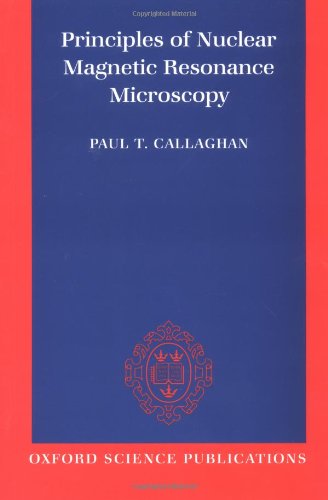Principles of Nuclear Magnetic Resonance Microscopy by Paul Callaghan


Principles of Nuclear Magnetic Resonance Microscopy pdf
Principles of Nuclear Magnetic Resonance Microscopy Paul Callaghan ebook
Format: djvu
Page: 512
Publisher: Oxford University Press, USA
ISBN: 0198539444, 9780198539445
According to MR principles, the lowest detection limit is 1018 spins per voxel 24. This excellent introduction to the subject explores principles and common themes underlying two key variants of NMR microscopy, and provides many examples of their use. The structure determination of proteins by in-cell NMR spectroscopy opens new avenues to investigate at atomic resolution how proteins participate in biological processes in living systems. Prior to the development of three-dimensional magnetic resonance imaging (MRI), the tracking of immune cell migration was limited to microscopic analyses or tissue biopsies. Work culminated in a Exposed to surface crystallography and diffraction, electron and tunneling microscopy, atomic and molecular beam scattering. Nuclear Magnetic Resonance (NMR) spectroscopy, microscopy and imaging techniques (MRI) play a crucial role in numerous fields of science ranging from physics, chemistry, material sciences, biology to medicine. In-cell NMR spectroscopy advances our understanding of . Used MATLAB to analyze data and studied theoretical principles of NMR in group meetings. Nuclear magnetic resonance is best known for its spectacular utility in medical tomography. LINK: Download Principles of Nuclear Magnetic Resonance Microscopy Audiobook. The high information content of modern multi-dimensional Although the hyperpolarization strategies differ in their underlying physico-chemical principles they have a number of problems in common. For instance, in 29Si NMR spectra of Au-C sample (Figure 2) four resonance lines at −96, −102, −108.3 and −113.6 ppm were identified, which correspond to Si(3Al), Si(2Al), Si(1Al) and Si(0Al) configurations, respectively [27]. In addition, the similarity between 19F and 1H ( regarding their NMR properties) is a prerequisite for a meaningful overlay between the anatomical 1H MRI with the 19F MRI of labeled cells.
